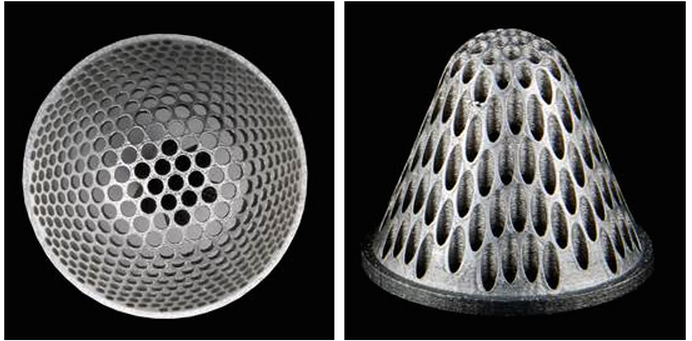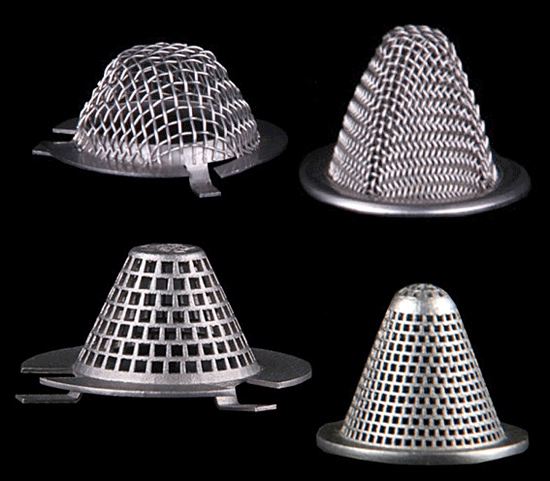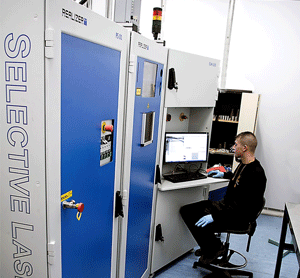Croft Additive Manufacturing (CAM) has managed to make the world of filters exciting. High technology, and high level research and design with world experts regarding basic items that we need really could not be more inspiring, as we require filters in nearly all aspects of manufacturing and production (let’s not forget clean water). Better filters equal better products.
Croft Filters, based in the UK, has been a leader for 27 years in an industry that for so long has used the very traditional and often manual methods of subtractive (welding, cutting, etc.) techniques to make products. This is in spite of the fact that much of modern day machining is carried out by computer numerical control (CNC), in which computers are used to control the movement and operation of cutting machines. Croft Filters makes perforated plate, woven wire mesh, and expanded metal filters for many different sectors of manufacturing, with filter types including:
As both time and progress propel change, Croft Filters realized it could make revolutionary improvements in filtration through using additive manufacturing. Moving to additive manufacturing was certainly not an overnight process and they have proceeded with a well-thought out research and design path, working with other experts. After purchasing the Realizer SLM-250 additive manufacturing machine in a substantial investment of £500,000 (translating to roughly $815,000 U.S.), Croft Filters created Croft Additive Manufacturing (CAM). This new arm of Croft Filters is involved in highly innovative research and design, and some mutually rewarding collaborations through partnerships with STFC CERN BIC, as well as UK’s Lancaster University.
As the first company to be selected to join the Science and Technology Facilities Council (STFC) CERN Business Incubation Centre (STFC CERN BIC), CAM now has strong support resources to draw on with these experts in technology offering them partnership—extended to CAM because of their commitment to and innovation with 3D printing. The center is a partnership between the STFC and CERN, which is the world’s leading laboratory for particle physics. The center focuses on supporting businesses in taking innovative technologies from concept to reality in the market.
CAM is also working on research and development with the UK’s Lancaster University on improving “geometry of filter supports” by testing flow rates and pressure drops of 3D printed filters—during which they have discovered that if the holes in a filter are adjusted with directional flow, the filter quite simply works better and lasts longer.
Had it ever occurred to you that the filtration industry would be so affected by 3D printing? Have you ever considered engineering a 3D printed filter of your own for a project? Tell us about it in the 3D printed filter forum thread at 3DPB.com.
Subscribe to Our Email Newsletter
Stay up-to-date on all the latest news from the 3D printing industry and receive information and offers from third party vendors.
You May Also Like
Anatomy of an AM Accelerator: Brookings’ South Kansas Advanced Manufacturing Case Study
The Brookings Institution, long one of America’s most prestigious think tanks, has released a case study titled, “Expanding South Kansas’ aerospace cluster into a resilient advanced manufacturing sector.” In the...
3D Printing, China, and the Struggle to Produce Exactly Enough
Global supply chains have demonstrated an almost eerie resilience in the face of one ongoing crisis after another in the last half a decade. Still, one often gets the feeling...
3D Printing News Briefs, May 25, 2024: 3D Printed Medical Models, Sensors, Engines, & More
We’re starting with research in today’s 3D Printing News Briefs, first about filament diameter-adjustable 3D printing and then about 3D printed sensors. Then, we’re moving on to personalized 3D printed...
Navy’s Afloat Additive Manufacturing Program Creates Scalability Model for 3D Printing Industry
A story published this week in National Defense spotlights a new Department of Defense (DoD) program of record (PoR) for fiscal year 2024, the Navy’s Afloat Additive Manufacturing (AM) Program....





































